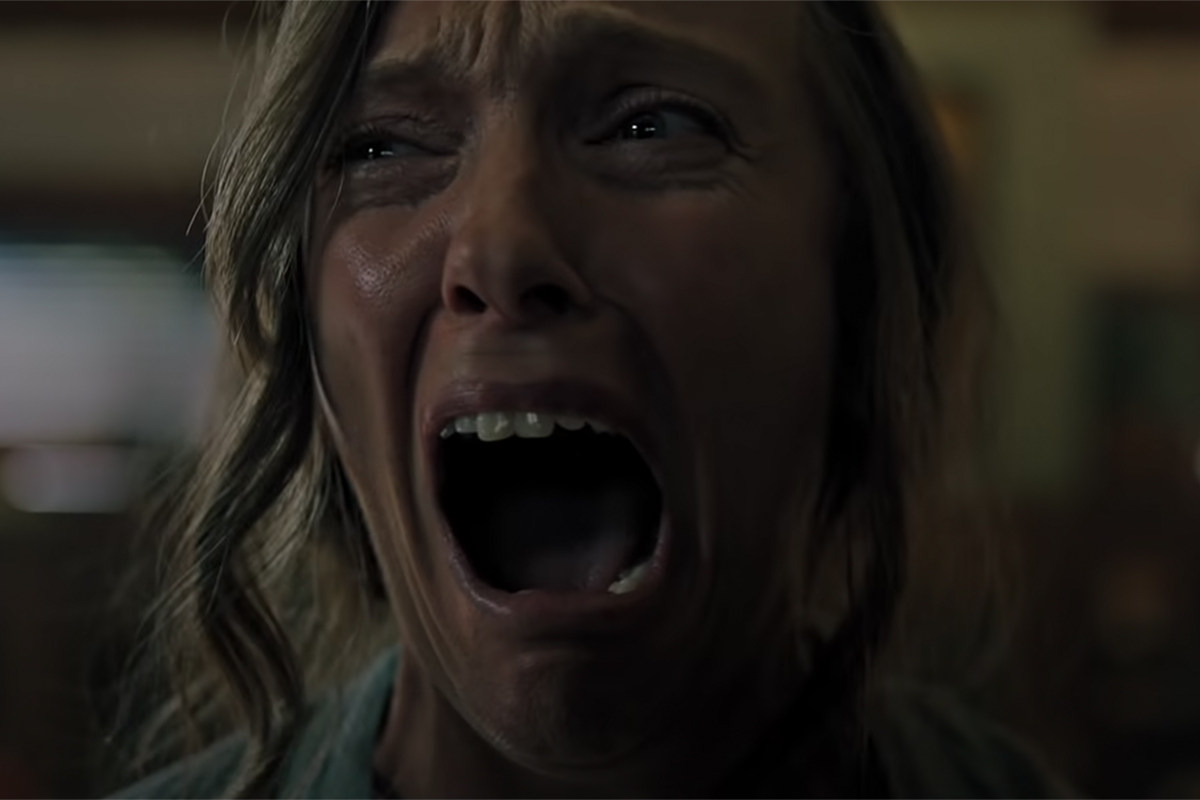Have horror filmmakers become too reliant on the jump scare? Let’s talk about it.
Following the recent release of Smile, which has so eloquently been referred to in social media comment threads as “Jump Scare: The Movie,” we as filmmakers must ask ourselves if jump scares are overrated. How do you earn a scare? The idea of knowing what “scares” your audience is completely subjective and relies on hundreds of different factors, ranging from how you made the movie to their own experiences that inform what scares them. But that doesn’t mean there aren’t few things we can try when learning how to make good horror films. First up, let’s talk about the jump scare.
What Is a Jump Scare?
A jump scare is the most basic form of manipulating the art form to elicit a reaction from the audience. Loud noises, flashing imagery, and sudden cutting between two frames are perfect examples of how jump scares work. The foundation of a jump scare is built entirely around audio and the contrast between quiet and loud sounds. It’s like going from a soft whisper to a loud scream in half a second, or going from standing still to a full out sprint — the heart rate skyrockets, and there’s no way to avoid it. There’s a build up of tension followed by a quick release and relief through visual and auditory shock.
While this can be an effective way to scare your audience, these types of scares aren’t usually memorable after the film ends. They carry no real weight in the context of the story, and they’re just beats that need hitting. I’ve seen countless horror films with probably hundreds of jump scares that I typically never remember. I think I could name maybe three really memorable jump scares off the top of my head from the past 10 years? They’ve become such a staple of modern horror filmmaking that it raises the question “Is it possible to make a horror film without jump scares?”
The answer? Sure. But there’s also a way to make them memorable. So how do you avoid relying on them when trying to make a successful horror film? Let’s discuss!
The Fake Jump Scare or “the Lewton Bus”
It’s important that we distinguish the two types of jump scares before we talk about how avoiding them can improve your horror film. The first is the aforementioned silent build-up of tension followed by a shocking cut to the scary monster or thing that is bringing the horror in your story.
The second type of jump scare is the non-jump scare referred to as the Lewton Bus trick. The basic idea of this scare comes from the 1942 film Cat People, where the protagonist walks down a dark corridor as you expect to see a frightening shot of the villain; however, at the last moment when all the tension has been built up, a loud bus pulls into frame creating the “fake” jump scare. It’s not the actual scary thing that creates the scare; rather, something unexpected causes a sigh of relief after it happens. Here’s where this technique comes from. (Watch the whole thing.)
These types of scares are everywhere in horror films, usually in the first and second act of the film as a way to build tension leading up to the “horror-filled” third act. But in my opinion, these fake jump scares are what’s ruining the effectiveness of real jump scares. While they are meant to act as a tease for what’s to come, I think they actually soften the effect of the real scare. The more they’re used in films these days, the less audiences are affected by them. You can still leave the audience with tension bread crumbs, creating that fear — you just don’t have to rely on a jump scare to break up the tension.
Instead of leaning on these Lewton Bus scares, try focusing more on the build-up in the writing process. Look at Ari Aster’s Midsommar, a folk horror film about a group of college students realizing the secluded summer festival retreat they’re attending is actually something quite sinister and dangerous. The horror comes from the slow dread that builds over the course of several scenes and acts that take their time revealing the “scary” information to the audience. As the protagonist slowly realizes their fate and what’s really happening, there aren’t big flashy scares that add to the terror — it’s the situation that’s scary.
Throwing your characters into scary, unknown situations, rather than relying on sudden, seconds-long, scary things happening to them throughout the film, is a great way to set yourself up for bigger payoffs in the third act. While this type of horror isn’t as financially successful as one would hope, it’s memorable and has a lasting impact on the audience that does see it.
Getting It Right
I think it’s important that I mention some horror movies that don’t subscribe to this style of horror but rather follow their own unique route to earning their audience’s fear. The most recent example is Barbarian, directed by Zach Gregger, which I highly recommend checking out. There are jump scares throughout the film, sure, but the film doesn’t rely on them to be scary. Once the plot is revealed, the themes and ideas are supported by cinematography, longer takes, and good acting, which is enough to create those lasting images and feelings in the audience’s mind.
There’s also incredible use of silence and darkness that doesn’t force a jump scare at the end of the sequence but, rather, lets the characters exist with that fear for most of the film. It also helps when the idea you have for your film is inherently shocking and twisted. But, this doesn’t mean you have to make the most twisted, gross horror film of all time — just try to be original with your ideas.
Another great example is 2018’s Hereditary, again, directed by Ari Aster. While there are plenty of jump scares throughout the movie, the single most terrifying moment comes from a shot with no camera movement and no sound. However, I would still consider this a jump cut as there is technically a cut from a single non-scary frame to a scary frame.
I remember this scene in theaters because once it cuts to “that shot,” it really took the audience a bit of time to realize what they were looking at — and the reaction was one of disbelief and shock! That slow terrifying realization truly did trump an impulsive scream.
The best jump scares are the quiet ones. The scares that keep you up at night because you just can’t shake the uneasiness of it all. Good horror isn’t showing the audience everything — it’s leaving it up to them to find the fear.
So, is the jump scare ruining horror movies? Not at all. But I do think there could be more inventive, inspiring ways to create scares and generate fear from audiences. Are you up to the challenge?
Cover Image via A24.
Looking for some music for your projects? At Videvo, our library has everything from free ambient music to music for streams — perfect for any indie project:
- Royalty-free Christmas music
- Royalty-free meditation music
- Royalty-free upbeat music
- Royalty-free jazz music
- Royalty-free Halloween music
Need a break? Check out our videvoscapes — the ultimate reels for relaxation or concentration. Each videvoscape collects hours of high-definition nature footage and background video with downtempo chill beats for the ultimate escape from the grind.




